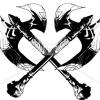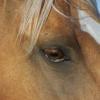-
Posts
7,768 -
Joined
-
Last visited
Contact Methods
-
Website URL
https://www.rw-leatherworks.com
Profile Information
-
Gender
Male
-
Location
Flint, Michigan, USA
-
Interests
Leather work, sewing and sewing machines
LW Info
-
Leatherwork Specialty
Handgun holsters, tooled belts, bridle leather belts, custom made to order leather items, sewing patches onto bikers' vests, alterations, zipper replacements and repairs of leather goods.
-
How did you find leatherworker.net?
Google search
Wizcrafts's Achievements

Leatherworker.net Regular (4/4)
-
@bsshog40 Please read this sticky topic that I started several years ago, which describes the type of machine you need to sew leather.
-
@janosaw, I moved your request to the Leather Sewing Machines forum. You will get better answers in this section.
-

upgrading to oldschool singer 132k6 and 132k7
Wizcrafts replied to VinnyK's topic in Leather Sewing Machines
The Singer 132k6, with the spring loaded follow foot, was actually designed for the buffing wheel industry. I think there was an attachment that secured the center of the wheel and moved it slowly in time with the action of the machine to sew through all of the layers of cloth in a circular spiral pattern. The capacity is 1/2 inch, or 12.5mm. The follow foot is only useful if it can grab a hold of the top surface, like it can in cloth items. I tried sewing slicked leather belts along the edges only to have the foot slide on the top and do nothing to help the feed. As a result, the stitch length varied and I ruined some things until I got wise and sold the machine. Assuming you can get one of them to work, it might be good for upholstery that is thicker than the Adler can handle, or requires a heavier weight thread. The 132 I had was able to handle up to #346 bonded nylon thread. -
I think you might have a good shot at it with a post bed machine that has a roller foot and a roller feed dog.
-
Here is a YouTube video showing a glove sewing machine in operation:
-
Are you aware of glove sewing machines? These are specialty post bed machines that are mounted onto industrial sewing machine tables that can have a servo for precise control. They have a tiny top profile that gets inside the fingers of the gloves. Aside from dedicated glove machines, you could find a used post bed machine that already has a small roller foot and possibly a roller feed dog. These are used to sew hats and caps, or arm holes in shirts and vests.
-
That is correct. It is a walking foot machine and is not a candidate for a roller foot conversion. If you really want a roller foot machine that is on par with you Outlaw stitcher, search for a Singer 45k with a roller foot installed at the factory. Or, buy a modern day clone like the Cowboy cb2500, which can be fitted with a roller foot by the dealer.
-
Some of us, myself included, have machines without reverse. We can either sew all the way around an object and overlap the starting thread about 5 stitches, or tie off the starting threads under the work, or spin the work 180 degrees and perform poor man's reverse to sew over the starting few stitches. As for holding back both starting threads, some jobs render that impossible. A good example is sewing patches onto vests and jackets where you can only handle the top thread. In this case I hold down the top thread behind the presser foot so it doesn't get pulled down into the shuttle during the initial couple of stitches.
-
Fergettit! Walking foot machines are not candidates for conversion to a roller foot. That is pretty much limited to straight stitch machines that have a single foot and bar coming down. Yours is a walking foot machine with two bars to deal with. The first obstacle will be finding a roller foot mounting bracket that will fit into the slot in the center of the presser bar. Most of them are designed to attach to the outside of a round presser bar that may or may not have a flat edge on the left side. The inside foot would have to be removed. Lastly, the feed dog is centered under the inside foot. A roller foot usually sits out on the left of the feed dog. If the roller is too far from the feed dog, it may not be able to feed the leather without the bottom assist. Your only drive would be the moving needle. You are better off buying a straight stitch machine to convert to a roller foot. A large roller has smoother operation and is good for most edge sewing. A smaller wheel is better for sewing designs, or intricate stitching. If you are able to find a roller foot that does fit into the back presser bar, keep the edge of the roller as close to the needle as possible. This will keep the leather from lifting with the ascending needle. The greater the distance from the bottom of the roller to the left side of the needle, the greater the likelihood that you'll get skipped stitches from lifting leather.
-
Try listening as you handwheel the machine. It kind of sounds like gears are grinding from being too close together. I might also be the opener arm pulling the shuttle all the way back with a hard stop. There must be a little clearance when the arm pulls the tab back.
-
This topic, although interesting from a technical and argumentative position, has been thoroughly discussed to no end. The facts are what they are and arguing about them doesn't change them. Bobbins are required in lockstitch machines; period. If anybody has a better idea that will keep a bottom thread in play without a self-contained bobbin inside a shuttle, they should patent that technology and try to market it to the major companies that build sewing machines. We will be happy to promote your invention! Thus, as much as this has been interesting, it is pointless. I am locking the topic.
-
You're missing the main point of how the bobbin functions in a lockstitch machine. In order to overlock two threads to sew things together firmly, you need to cause the top thread to wrap around the source of the bottom thread. It surrounds the bobbin case/shuttle completely. This precludes having the bottom thread coming from anywhere except from a self-contained bobbin that resides inside the shuttle case. Any external thread would jam the machine as the loop goes around the shuttle. If that thread was feeding through a hole on the middle of the shuttle, the top thread would get snagged by it as it tried to work around the top and bottom of the shuttle. You see, the normal position where the bobbin/bottom thread gets pulled up is after the tension spring and under the throat plate. The top thread, having surrounded the shuttle, with its bobbin, pulls up with the captured bobbin thread in the middle of its shrinking loop. If you can get a hold of a home sewing machine you can watch how it functions to form stitches. Then you'll understand why your system fails to pass muster.
-
Yes, that's what I'm saying. I wish it wasn't so. If anybody was able to figure out a way to replace bobbins in a lockstitch machine with a spool of thread, they would have by now. The only workable solution to using bobbins is a chainstitch system. Redwing boot uppers are sewn on triple needle chainstitch machines that were designed in the late 1800s and early 1900s. The company that made these obsolete machines was named Puritan. They only use thread that is on top; one spool per needle. The chain is formed under the throat plate by a so-called "looper" mechanism. The top stitches are almost always perfect. The bottom stitches have loops showing where they are wrapped around the thread that got pulled under the work.
-
In addition to proper scarf alignment, make sure that the needle is the correct system for the machine, and is all the way up in the hole in the needle bar before being tightened in place. When aligning the sides, make sure that the eye hole is perfectly inline left and right on your machine, and that the rib side faces away from the hook, and the cutout scarf faces the hook. If the new needle is inserted correctly and the machine still won't pickup the bobbin thread, either the shuttle/hook assembly was knocked out of time, or the needle bar was force up a little, putting it out of position for the hook to catch the top thread loop. Remove any cover over the shuttle so you can watch it in action and hand wheel the machine while you watch the needle reach bottom dead center, then ascend about 3/16 inch. At this point the tip of the hook should be intersecting the thread loop that was formed when the needle ascended. If the hook has already passed by the needle, the needle bar may have been knocked out of time by the impact. Set the hook inline with the needle, loosen the screw(s) on the needle bar, then pull it down until the eye is about 1/8 inch below the tip of the hook. Lock down the screws and see if it now sews. Make sure you do this as the needle is moving up from BDC as this is when the loop is formed by the upward motion.








